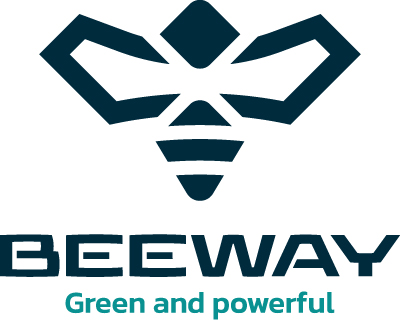Acquisition assistance in France
The decree of December 30, 2022 has revised the subsidies for the decarbonization of mobility. Each Beeway is an electric vehicle, and therefore benefits from the same subsidies whether it is battery-powered or hydrogen-powered:
- Ecological bonus for electric vehicles: €4, 000 (up from €5,000 in 2022)
- Conversion bonus: €9,000
These bonuses and premiums are no longer reserved for the least expensive vehicles, and even better, the conversion bonus for LCVs depends on their weight: Beeway is a Class III LCV (reference mass > 1,760 kg) which benefits from the highest conversion bonus.
If the vehicle benefits from local ZFE assistance from the municipality or the Region, this is topped up to a total of €2,000.
Territorial hydrogen ecosystem
France has opted for a support system designed to develop a local value chain from production to distribution and consumption of green hydrogen.
For a project to be eligible, the hydrogen must be produced by electrolysis using electricity from renewable sources or from the distribution network. The project must also include hydrogen distribution stations.
Subsidies are also available for stationary use or for light or heavy mobility by LCVs such as Beeway. These applications must consume 50% of production within two years of the electrolysers being commissioned.
The hydrogen Beeway can be subsidized from 35% to 55%, depending on the size of the purchaser, and this percentage is applied to the difference between the purchase price of the hydrogen vehicle and its diesel equivalent.
Vehicle acquisition costs
Thanks to these subsidies, the purchase cost is largely subsidized:
| Diesel | Batteries | Hydrogen | |
| Purchase price (excl. tax) | 35 000 € | 60 000 € | 150 000 € |
| Ecology bonus | – 4 000 € | – 4 000 € | |
| Conversion premium | – 9 000 € | -9 000 € | |
| ZFE bonus | -2 000 € | -2 000 € | |
| H2 ecosystem (40% of the Diesel/H2 delta) | – 46 000 € | ||
| Acquisition cost | 35 000 € | 45 000 € | 89 000 € |
Vehicle maintenance
To simplify the comparison, the vehicles will be compared on what makes them different. Common wearing parts such as tires, brakes, shock absorbers, etc. will not be taken into account here. The article focuses on the engine and expenses are reduced to a per-kilometer basis:
- Diesel: 6 ct€/km
- 500 € oil change and filters every 15,000 km
- 1,500 for a major overhaul every 50,000 km
- Batteries : Maintenance-free
- Hydrogen: 3 ct€/km
- 1,500 for a major overhaul every 50,000 km
Energy consumption
- Diesel: €20 / 100 km
- on a basis of 10 litres /100 km and €2/litre of diesel
- Battery: €4.60 / 100 km
- Consumption of 23 kWh per 100 km and cost of electricity of 20 ct€/kWh
- Hydrogen: €14.38 / 100 km
- Consumption of 23 kWh per 100 km
- 1 kg of hydrogen produces 16 kWh, so you need 1.43 kg ofH2
- 1 kg ofH2 sells for €10
Balance sheet



Outlook
The green hydrogen market is still in its infancy. But electrolyzers are being deployed, and more than 40 GW will be in service by 2030. As a result, the price of these electrolyzers should drop from $1,400 to $340/kW. Although the price of electricity is currently rising due to the use of thermal power plants, renewable energies are being deployed. What's more, technical progress is improving equipment efficiency. As a result, the price of a kilogram of hydrogen is expected to fall to less than €2/kgH2 by 2030 (compared with €10/kgH2 or more today).
!ùOn this assumption, the cost of possession of a hydrogen vehicle should be lower than a diesel vehicle after less than two years if it makes more than 100 km/day.
The widespread use of hydrogen should also bring down the cost of components and reduce the acquisition price of hydrogen Beeway vehicles.
Conclusion
Currently, battery-electric vehicles are more efficient for short-range applications, whereas hydrogen fuel cells provide a better fit for heavy-duty, long-distance transport. If service requirements need the vehicle to be recharged in a matter of minutes (e.g. 2×8 or 3×8 shift work), then hydrogen is preferred.
Tomorrow, the price of hydrogen is set to fall, both for H2 gas and for vehicle components. The hydrogen solution will then pay for itself even faster.
Note that battery-powered Beeways can be converted to hydrogen. It is therefore possible to start with batteries and then switch to hydrogen when it becomes more competitive, or even when an ecosystem or station is put into service.


